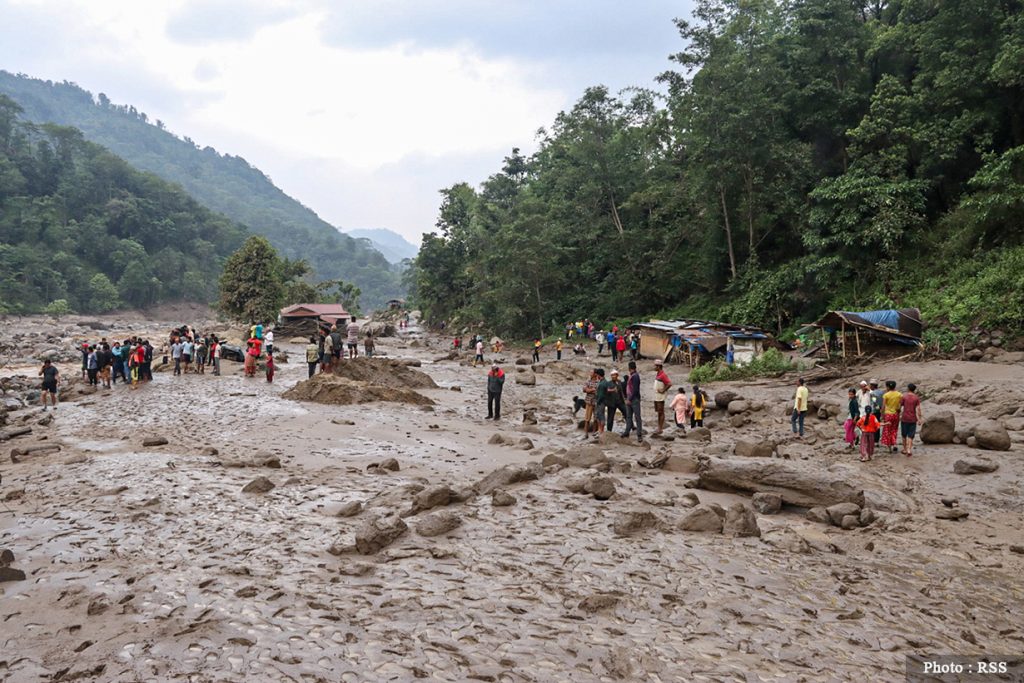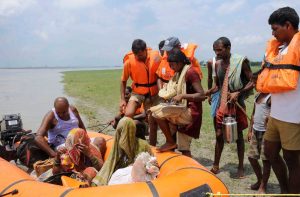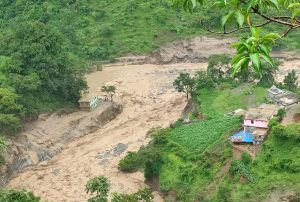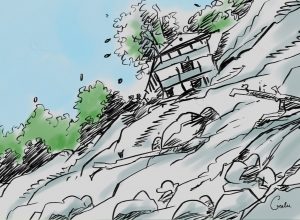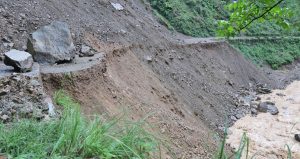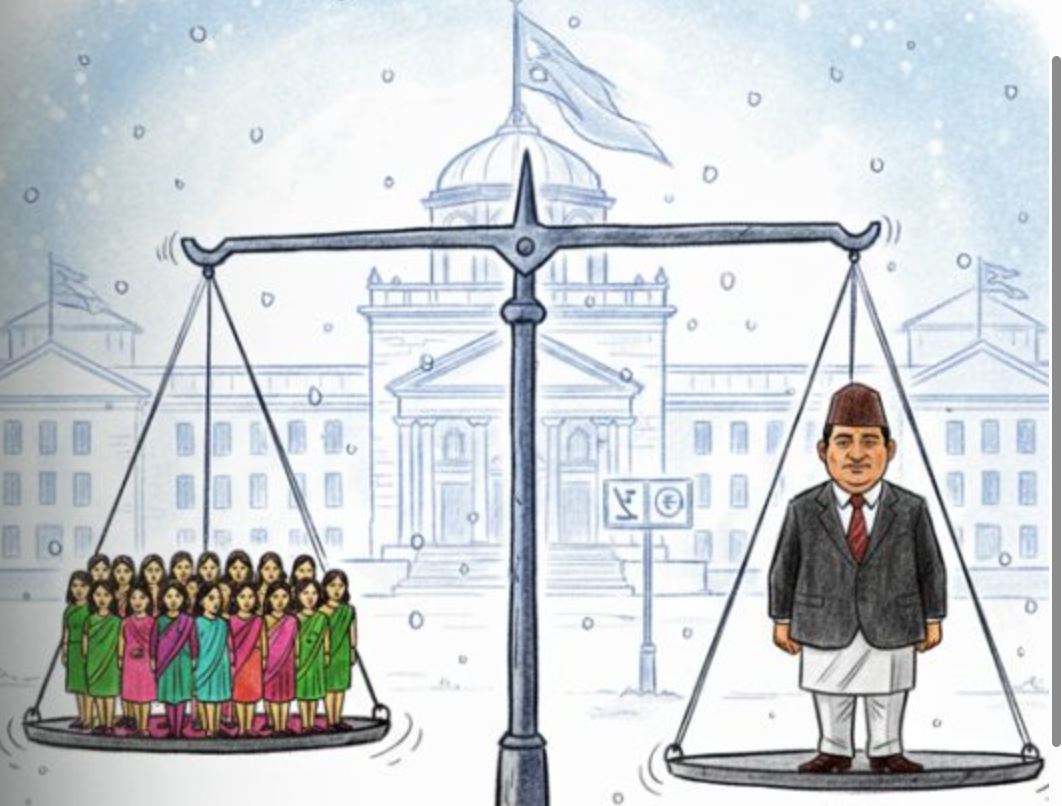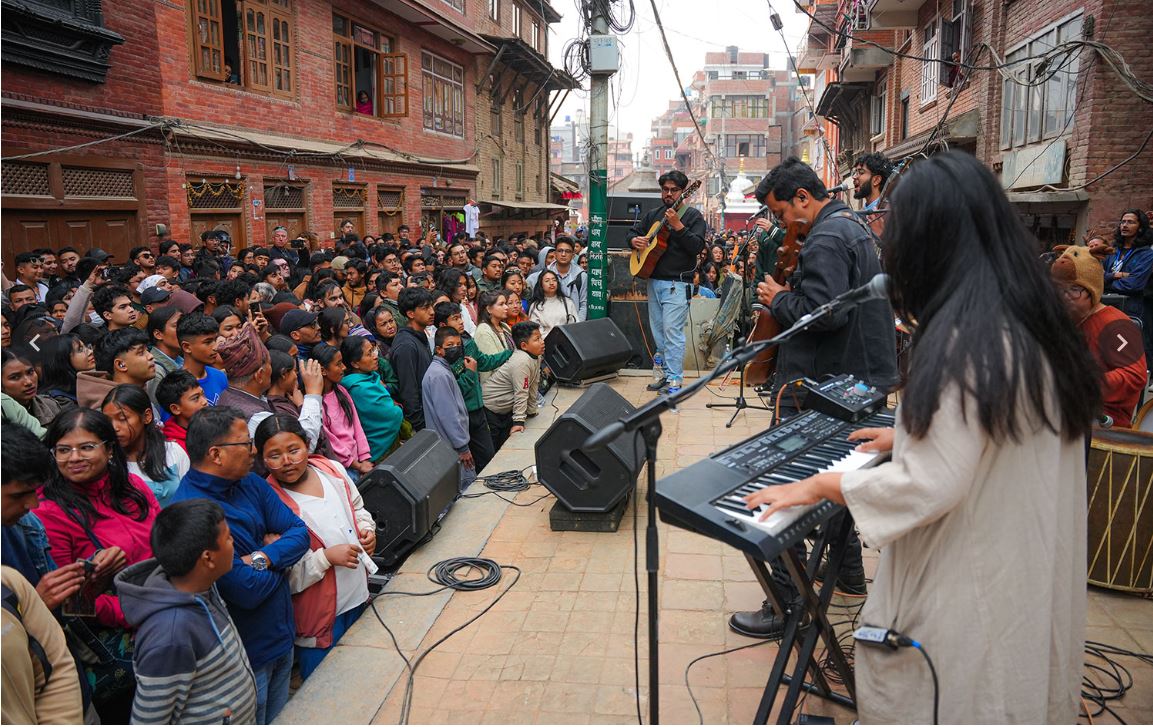Nepal’s Ministry of Home Affairs reported 73 deaths attributed to floods in the past year. While local government agencies lament over their helplessness to prevent the deaths, over 20 international nongovernment organisations and their local partners spend millions of rupees for the prevention of such disasters and provision of relief. However, the same cycle repeats every monsoon. Where does that money go?
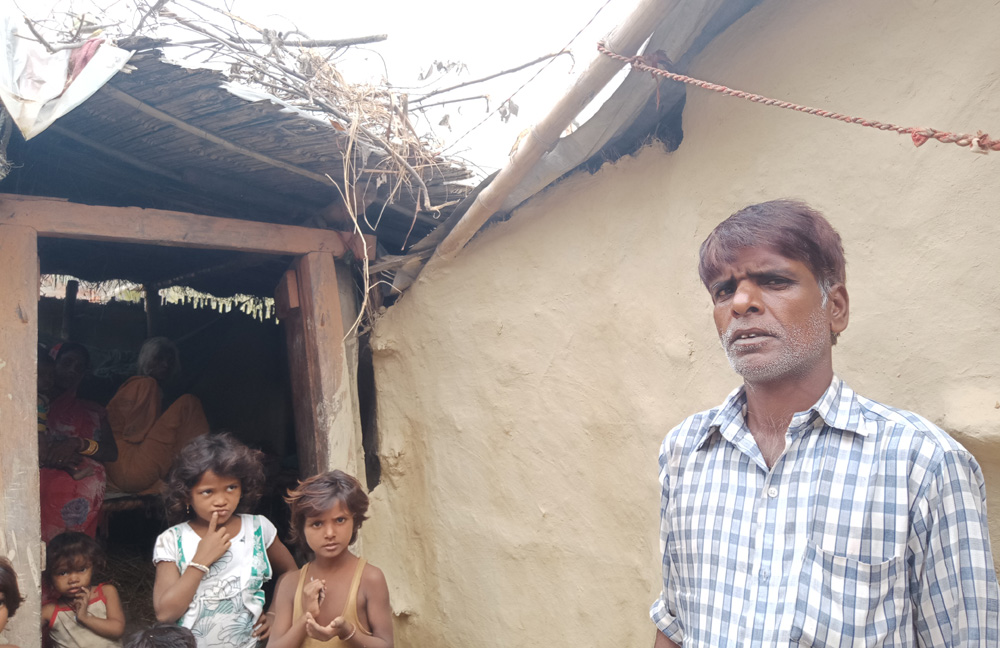
As his neighbours prepare for Chhath, one of the biggest festivals in southern Nepal, Shambhu Patel from Banjaraha, Rautahat, has something else in mind. Soon after celebrating the festival, during which devotees worship the Sun, Patel will part with his family for the next four months. The man in his 50s will return, only briefly, in March to celebrate another festival, Phaguwa.
Between these festivals, he will toil in Punjab, India, to make up for the losses his family incurred during the summer this year. In the second week of July, his one-room hut submerged following three days of rain. Patel borrowed Rs 70,000 from his relatives to repair the house.
“It will take me around two years to pay back the loan completely along with three per cent interest,” he says, “But I don’t know what will happen if the house submerges again next year. Any of my family members could drown.”
Patel knows some people drowned in the flood in his district that month. The District Administration Office recorded 20 drowning cases between July 12 and 28. In Patel’s neighbourhood, a man in his mid-30s died.
The DAO says 19 national and international non-governmental organisations, in addition to government bodies, are involved in campaigns to prevent such deaths and devastations in the district. However, their work seems to have had little impact as every monsoon brings stories similar to that of Patel and his neighbours.
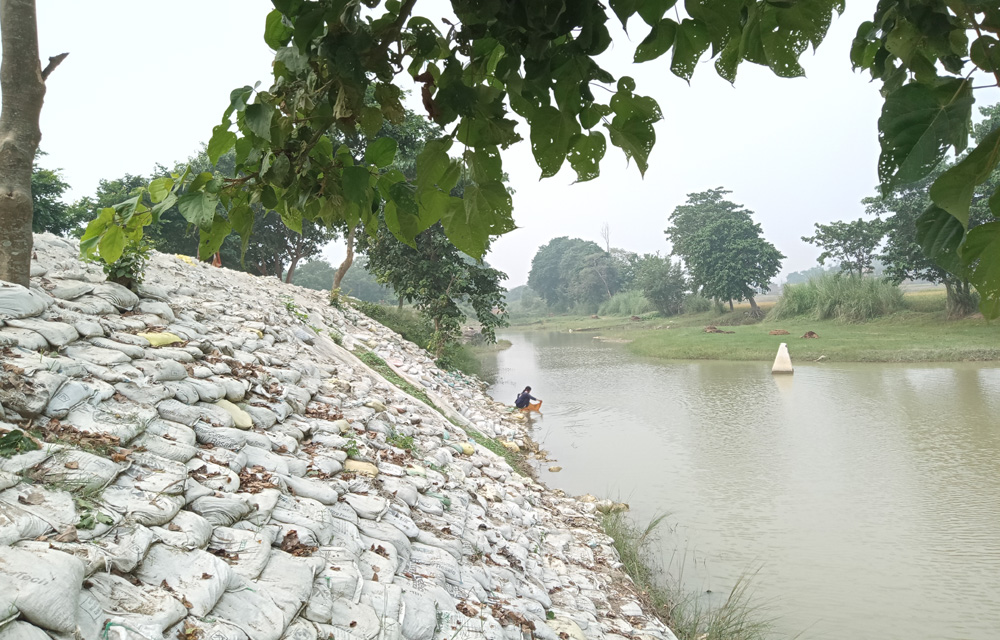
Stakeholders say drowning in the floodwater in Nepal is a tricky issue as it is attributed to the country’s geopolitical situation (for example, Rautaht is sandwiched between two big rivers, the Bagmati on the east and the Lal Bakaiya on the west, and India has constructed several dams near the border). The lack of clear policies on the roles of different agencies and the government’s financial misery have created space for NGOs to fill the void. However, the organisations have been largely ineffective in helping people cope with floods–most of them are interested in post-disaster support rather than prevention.
Prevention is not better than cure
Rautahat is one of the most flood-prone districts of the country. The National Planning Commission’s 2017 Post-Flood Recovery Needs Assessment reports 13 fatal drowning cases in the floodwater in the district during the monsoon that year –the highest in the country. Though only one person fatally drowned in the district the next monsoon, it reached 20 this year. At the national level, though the number dropped to 73 in 2019 from 90 of 2017, it is still high as drowning during floods is preventable, stakeholders argue. But, prevention activities are fewer than expected at the local level.
Though 19 organisations assisted government authorities in distributing post-disaster relief support to flood-affected families in Rautahat, the number of organisations working for drowning prevention is far less . Chief District Officer Kiran Thapa says that the government prioritises both prevention and post-disaster support equally, but he also says NGOs cannot do much on the prevention side.

“We have told them to train local communities to save themselves from drowning in partnership with Nepal Army and Nepal Police. Some of the organisations have supported the communities in hazard mapping and disseminating alerts via SMSes and radio bulletins,” he informs.
Rural Development Centre (RDC)-Nepal is one of the few NGOs that have worked on the prevention side, according to Thapa. The organisation’s Disaster Risk Reduction and Humanitarian Project coordinator Bijay Sah Baniya claims that only one person died in the municipalities that his organisation worked this monsoon, thanks to an effective preparedness. However, he concedes the prevention activities have not been expanded to other places due to the budget crisis.
Local journalist Gautam Shrestha says that the NGOs are more interested in boosting their profile rather than provide meaningful support. “Immediately after the floods, the NGOs come into the district. They do not care about the effectiveness of their programmes,” he says, “But, in the long term, what would have been better for them is to teach the locals to fish rather than give them ready-to-eat fish.”
CDO Thapa agrees that, in principle, prevention is better than cure. But, he cites a practical problem when asked why NGOs in the district are not working on prevention. “The organisations cannot do much about prevention even if they want,” he says, “The district needs a lot of new physical infrastructures such as big bridges and embankments. The entire settlement model needs to be changed. The NGOs do not have the mandate to do so.”
As Thapa says, the NGOs are mandated to do only a few things on the prevention side. The organisations have already done what they could do in some affected parts of the district. In Banjaraha, the most vulnerable village in the district, the NGOs have repeatedly trained people on what the risks are, how to swim to safety and how to salvage their belongings; and a new evacuation centre has been constructed.
Yet, RDC-Nepal, though it cites the lack of funds to expand the programme in other localities, continues the support for Banjaraha only. As Shrestha suggests, supporting ‘the most vulnerable’ neighbourhood sounds more ‘exciting’ and it can be ‘sold’ for larger funds next year.
The multimillion-rupee ‘business’
It is not known how much money the NGOs in the district spend on flood-related drowning prevention and post-disaster support. The NGOs are not ready to share the budget details whereas the government authorities also do not maintain any records.
But, national data show that the organisations are significantly soaring up their budget for disaster preparedness and support in the aftermath. Records from the Social Welfare Council, the government authority to regulate activities of the national and international NGOs in Nepal, show that the NGOs allocated nearly 1.5 per cent of their budget for disaster preparedness and risk reduction in the fiscal year 2016/17, and the figure rose to 2.2 and 7.9 per cent in the next two years respectively. In the last year (FY 2018/19), NGOs spent Rs 1 billion and 306 million in the sector. Interestingly, their total approved budget has significantly declined over these years.
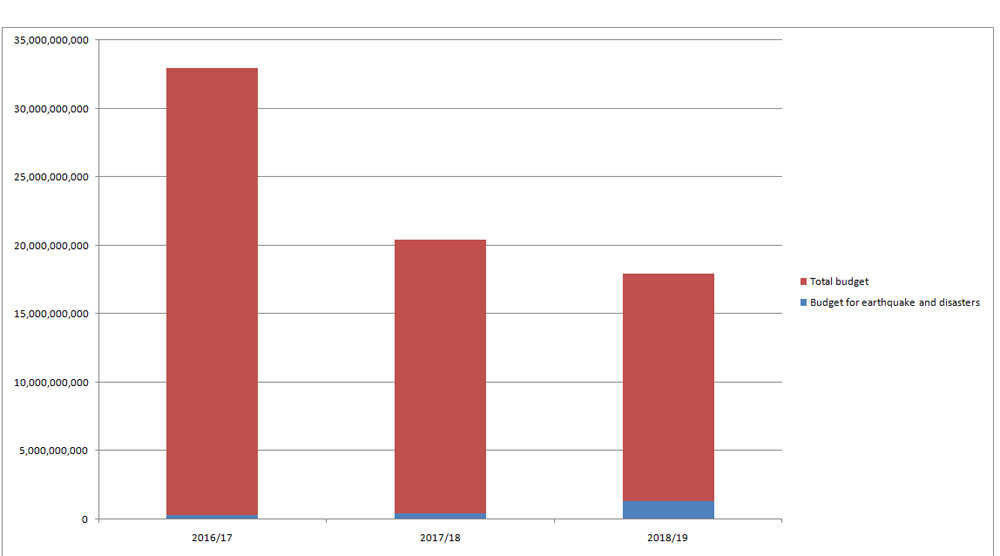
Besides the overall data of the disaster sector, the council does not have segregated statistics about the funds NGOs spent on flood and drowning preparedness. Apparently, in the first two years since the 2015 earthquake, a big chunk of the disaster budget went to the post-earthquake reconstruction activities. But, the NGOs’ disaster budget is still increasing even though the need for reconstruction support is gradually decreasing.
For Shiva Kumar Basnet, an acting director and spokesperson of the council, NGOs are expanding their focus on other disasters such as floods, landslides, fire and storm. Because flood is one of the biggest disasters that the country faces every year, it is reasonable to argue that a significant portion of the budget goes to flood preparedness and post-disaster support.
The government’s Disaster Risk Reduction Portal, which records losses caused by various disasters every day, lists flood as the biggest cause of human disappearance. Likewise, it is the third biggest disaster in terms of the number of affected families (after windstorm and fire) and the fourth biggest cause of disaster-related deaths (after thunderbolt, fire, and landslide).
The government, in its position paper presented at the Global Platform for Disaster Risk Reduction, identified flood as the disasters that have the largest impact on the country among other climate-related disasters. As NGOs are expected to prioritise their programme accordingly, the flood preparedness programmes receive a lot of money which could significantly prevent drowning, if spent well.
INGOs’ interest
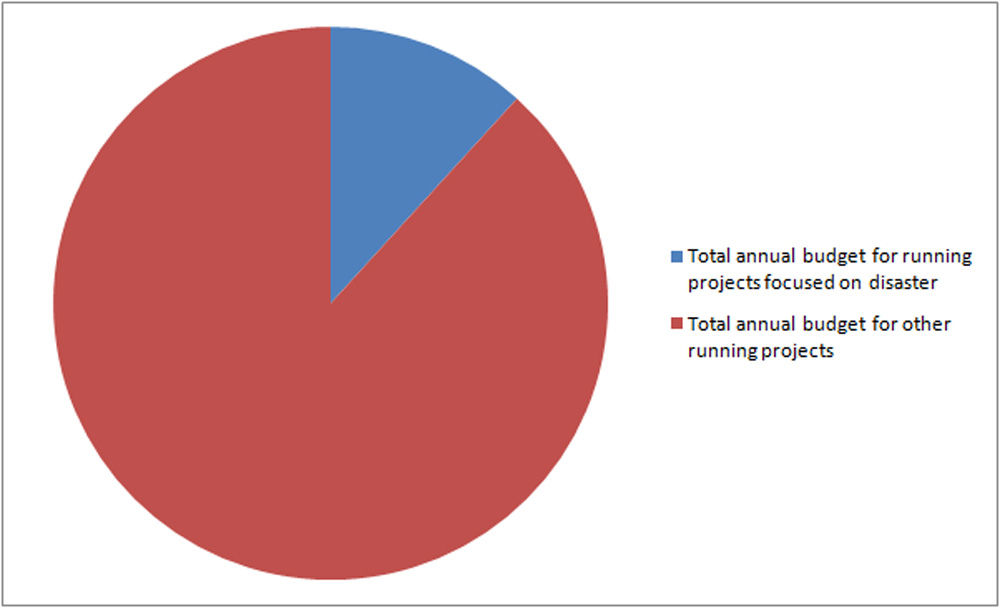
Most of national NGOs depend on their international supporters (INGOs) for funding. Records obtained from the council show that 153 international NGOs are running their programmes in Nepal as of September 10, 2019, and 23 of them run programmes related to disaster preparedness and relief support. These 23 INGOs spend over Rs 3 billion and 441 million in the disaster sector this year. It is 11.40 per cent of the total estimated annual budget of all 153 INGOs, which is Rs 29 billion and 297 million.
Like the NGOs, the INGOs are also increasing their focus on disaster preparedness and response. The council signed 87 project agreements with the INGOs in the fiscal year 2016/17; among them, 12 projects were related to the theme. The next year, the council approved eight projects related to disaster out of total 71. During the recently completed fiscal year 2018/19, the council signed only 49 new agreements, but 10 of them were related to the sector. It means, like that of the NGOs, the INGOs’ overall involvement is decreasing, but their interest in the disasters is increasing.

The council’s information officer Durga Prasad Bhattarai informs that the budget allocated under other headings also might have been spent on disaster preparedness as it is a cross-cutting issue. The council’s record confirms his statement as it keeps Oxfam’s support to RDC-Nepal under ‘community development’, not ‘disaster’ in spite of the local NGO naming the project ‘Disaster Risk Reduction and Humanitarian Preparedness’. It means the amount these organisations spend in the sector is bigger than what the council records show.
In addition to this, there are some untracked expenses. For example, a leading NGO of Rautahat, Mandvi: Empowering Women’s executive director Anjoo Jha mentions Action against Hunger, Voluntary Service Overseas (VSO) and Penny Appeal UK as her major sources of funds. However, all of these organisations are not on the council’s list of 153 INGOs that are running projects in Nepal currently. Bhattarai informs that the council does not have any right to investigate any NGO or INGO that is not affiliated with it. “If they come to our contact and we find that they have not approved their projects, we will take action against them,” he says, “Otherwise, the Social Welfare Act does not allow us to initiate action on our own.”
State’s helplessness
Bhattarai is happy with the projects approved by the council and claims they are transparent. “There are different procedures to maintain transparency. The government requires them to submit all expense details and audit reports. The NGOs have to conduct social audits and public hearings. They are also required to submit their reports to concerned local governments regularly,” he says.
However, the local governments (municipalities) lack the resources to keep track of the NGOs and make them work on their priorities. Back in Rautahat, CDO Thapa admits that the municipalities are clueless about handling the NGOs. Before the new constitution, the District Administration Office had some powers to guide the municipalities, but now they are independent governments and the CDO, a federal government employee, cannot instruct them to do anything.

Grisha Nandan Kumar Singh, a member of the local Ishnath municipality’s executive committee, also acknowledges that the local governments have not been able to shoulder their responsibilities. “I don’t know if I should tell you this as I am a part of the system,” he says, “But they are not responsible towards their public and the state money they use.”
Likewise, the chair of Ishnath municipality ward number 1 (Banjaraha), Bigu Sah, says he has been raising voices for preventing drowning deaths in his neighbourhood, but no one is listening. “A ward chair alone cannot do anything.”
Amidst this helplessness of the people’s representatives, it is not surprising that the NGOs are becoming powerful. “Yes, the state should have been capable enough to address these problems, but it is not. Hence, we, as humans, cannot leave the locals live in miseries,” Jha says before she admits, “But there is a problem within us also. NGOs consider each other as competitors. They want all the credit. Maybe there are limited donors and they need to prove their competence to receive the funds.”

Maybe Jha is right as an NGO in the district distributed mattresses, blankets and kitchen utensils as relief materials to the flood survivors in the third week of October, three-and-a-half months after the July disaster. “We did not get anything when we really needed them,” a 70-year-old woman waiting to receive the support, Tridevi Yadav from Auraiya, Ishnath-3, says. She adds that she does not know why the NGO did not come in July, but now.
Maybe the NGO does not work to meet the needs of people like Yadav who are at the risk of drowning every monsoon; it might have its own priority: more funds for the next season.
The story is written under the Drowning Prevention 2019 Reporting Fellowship offered by the International Center for Journalists with the support of WHO.






